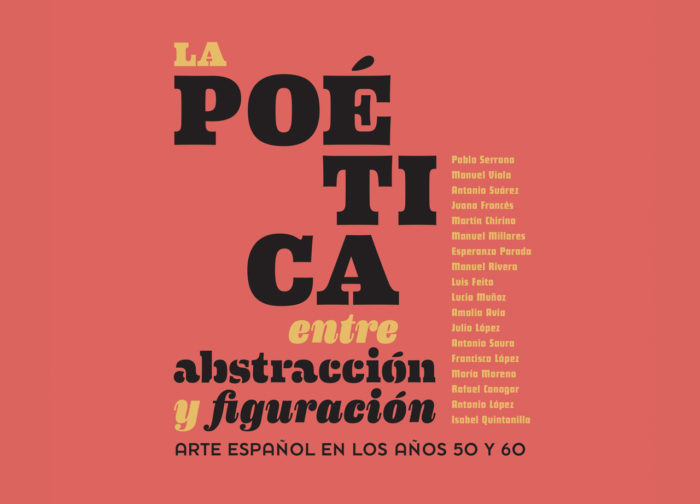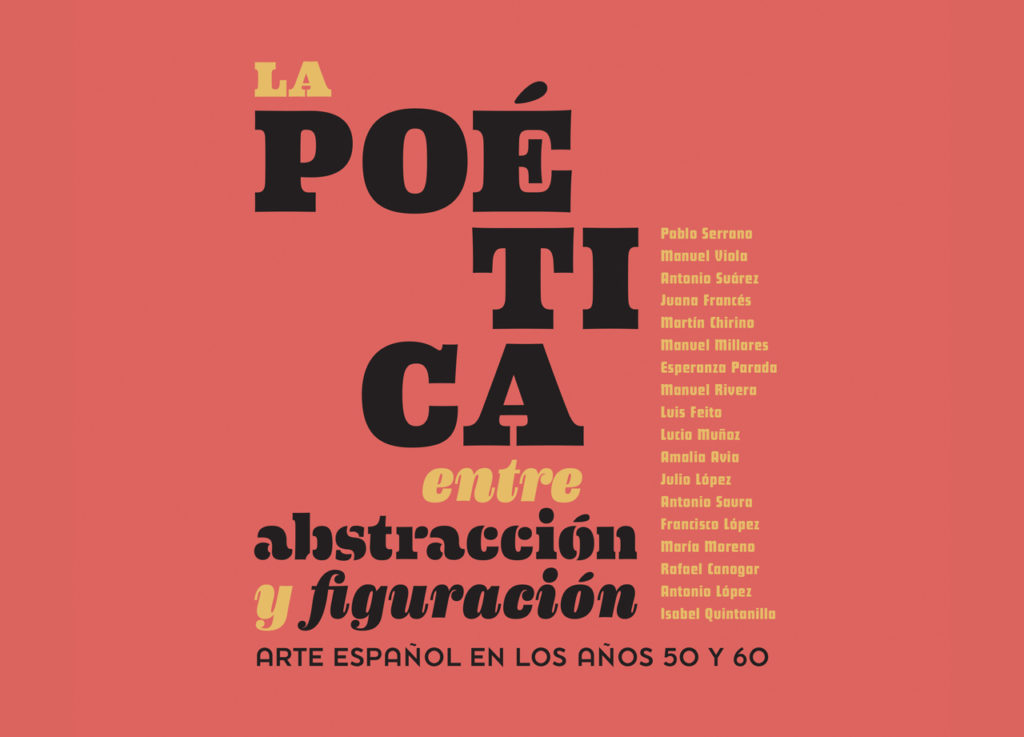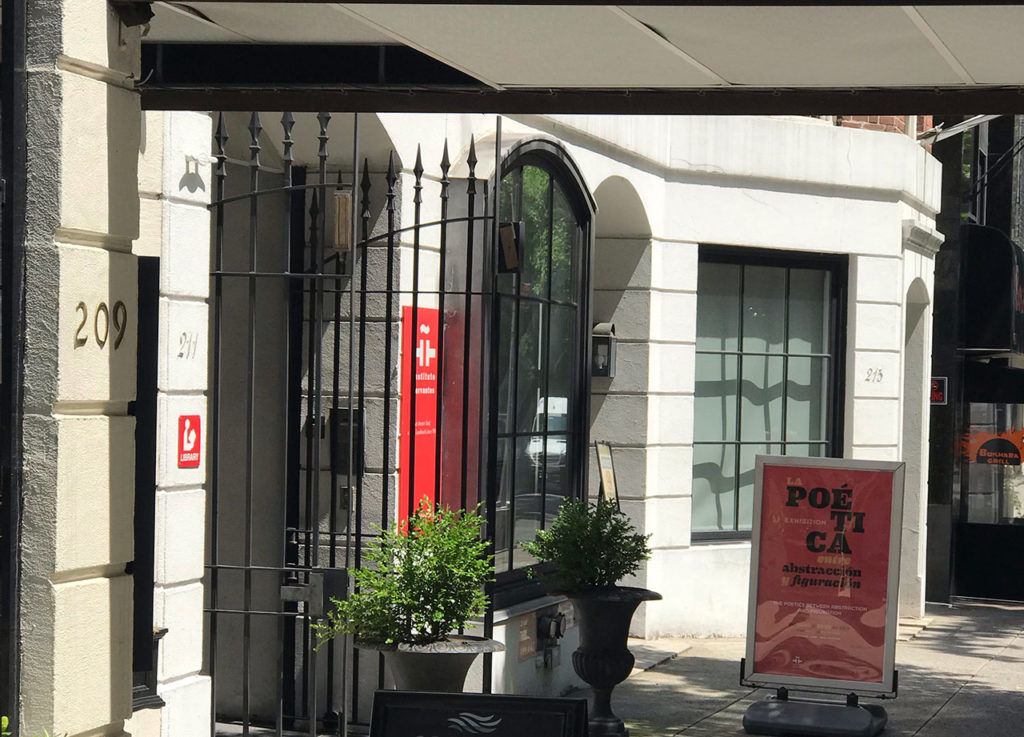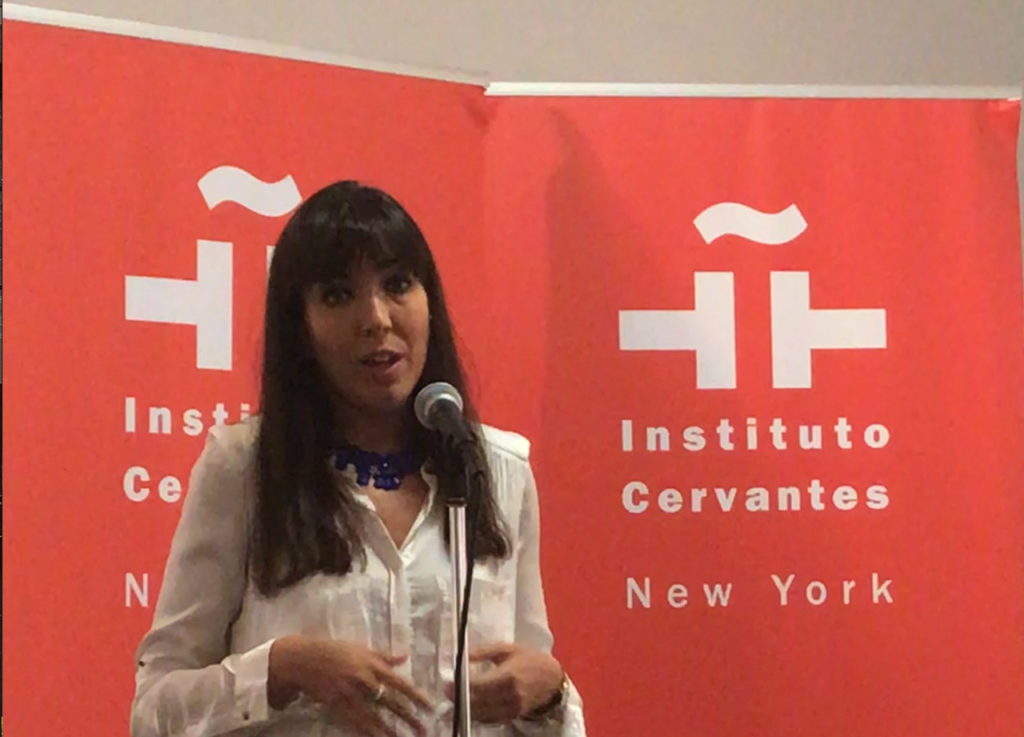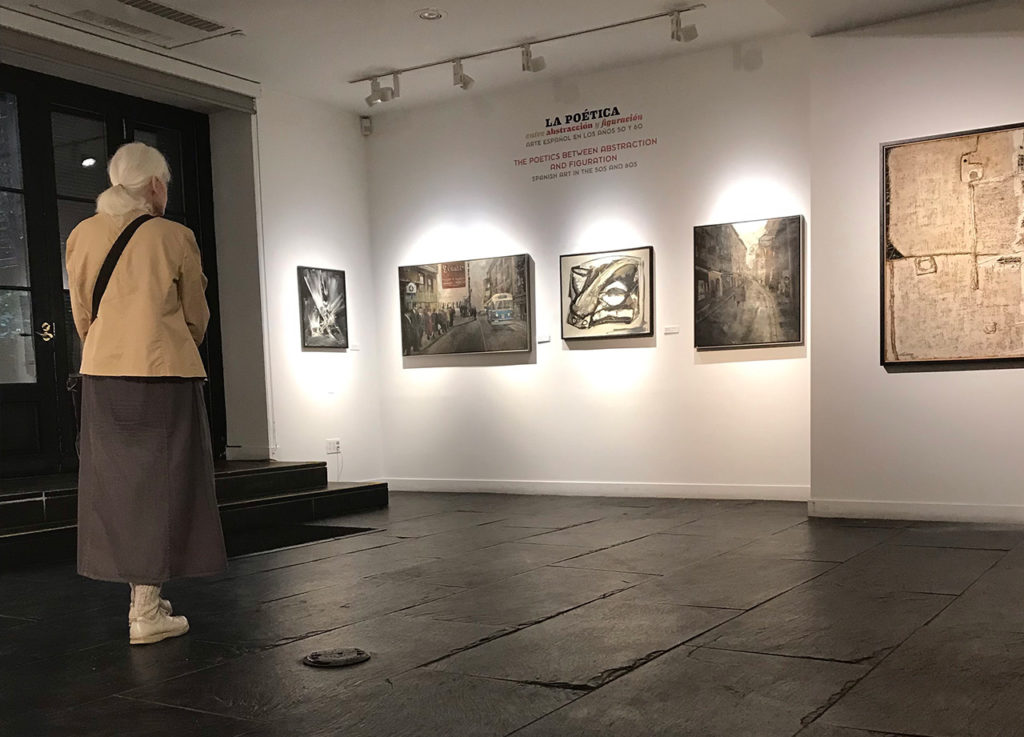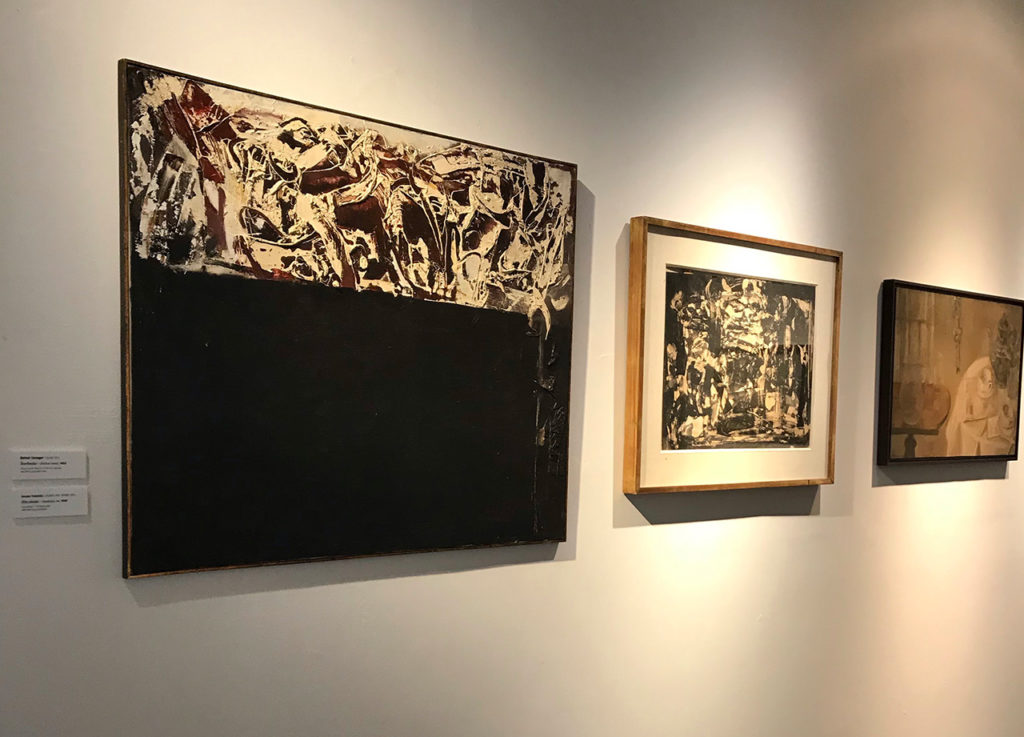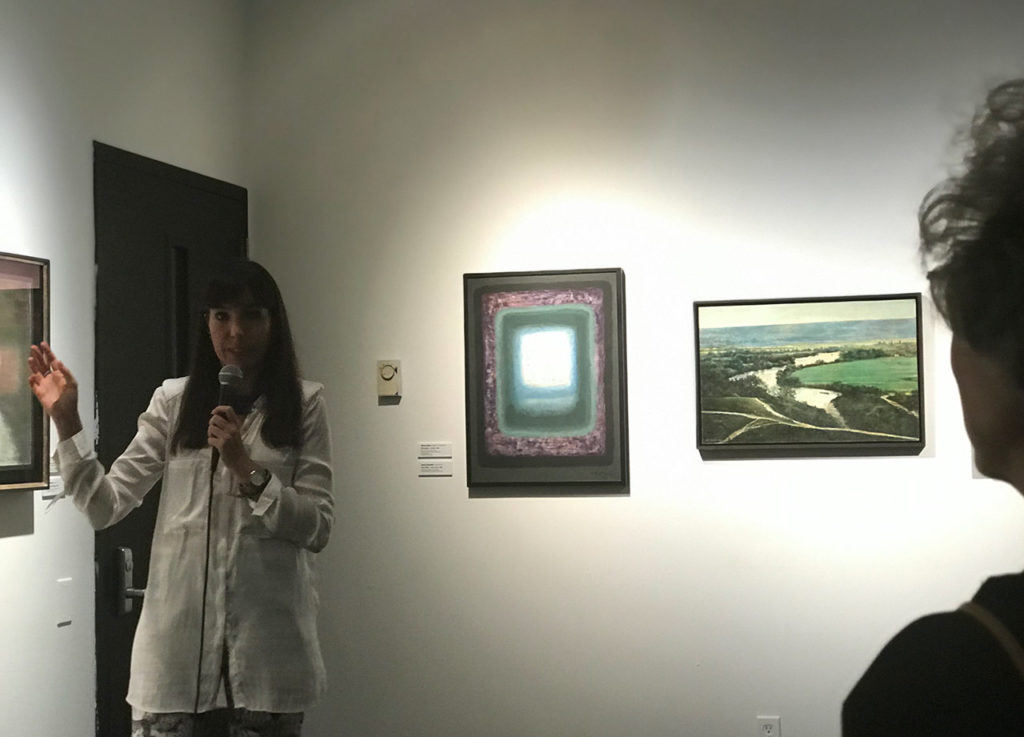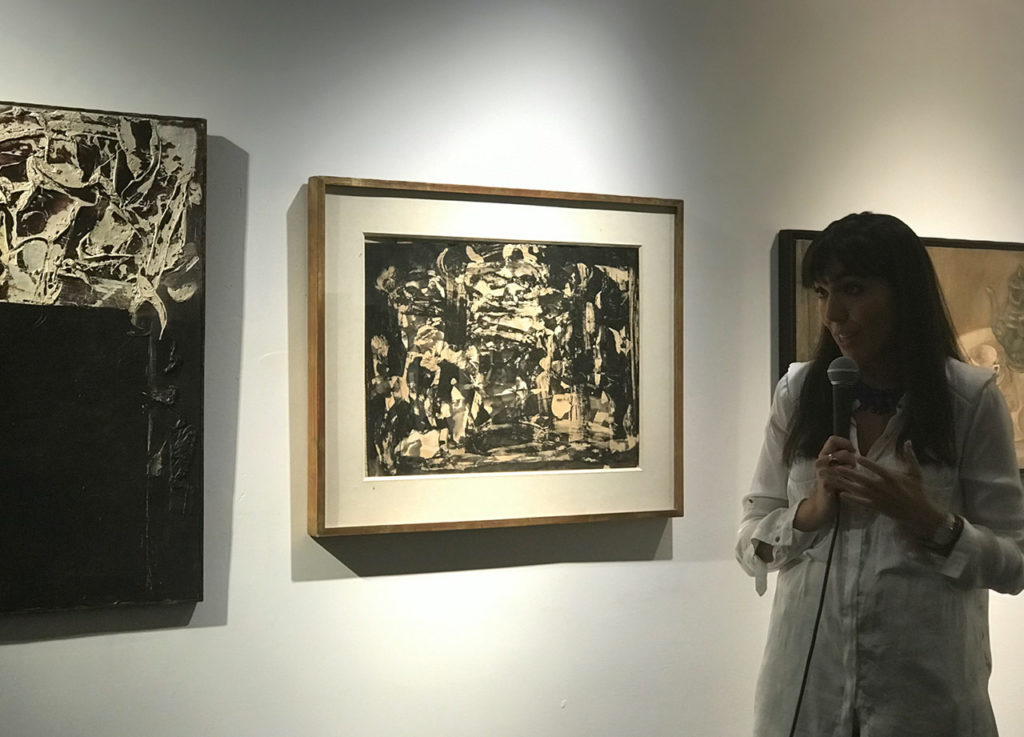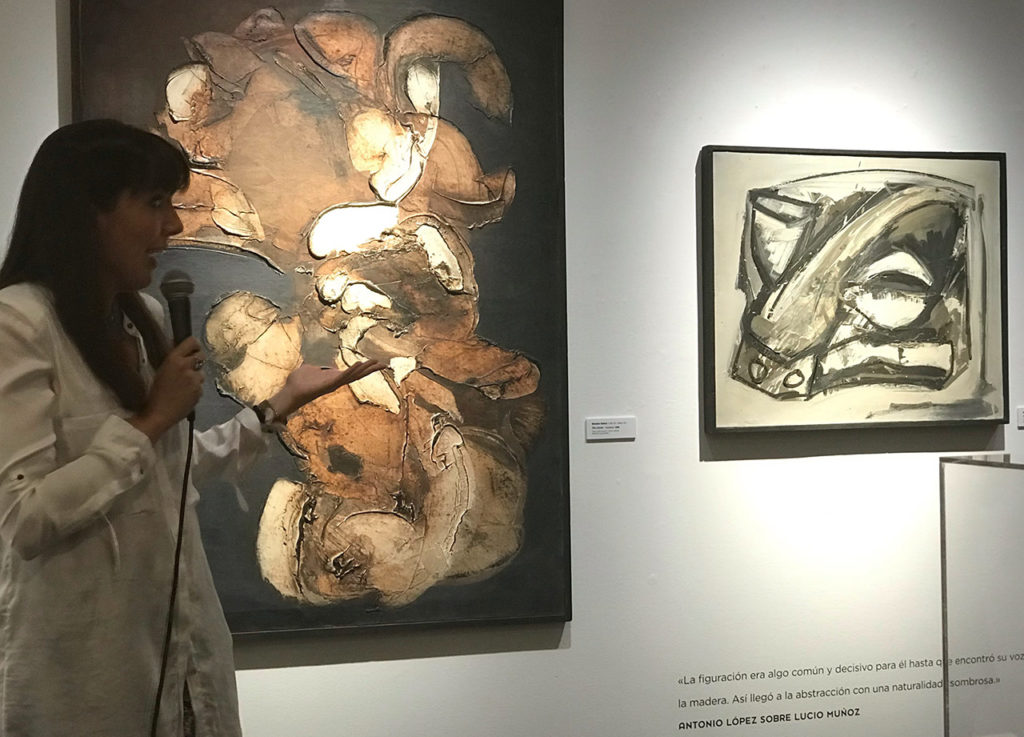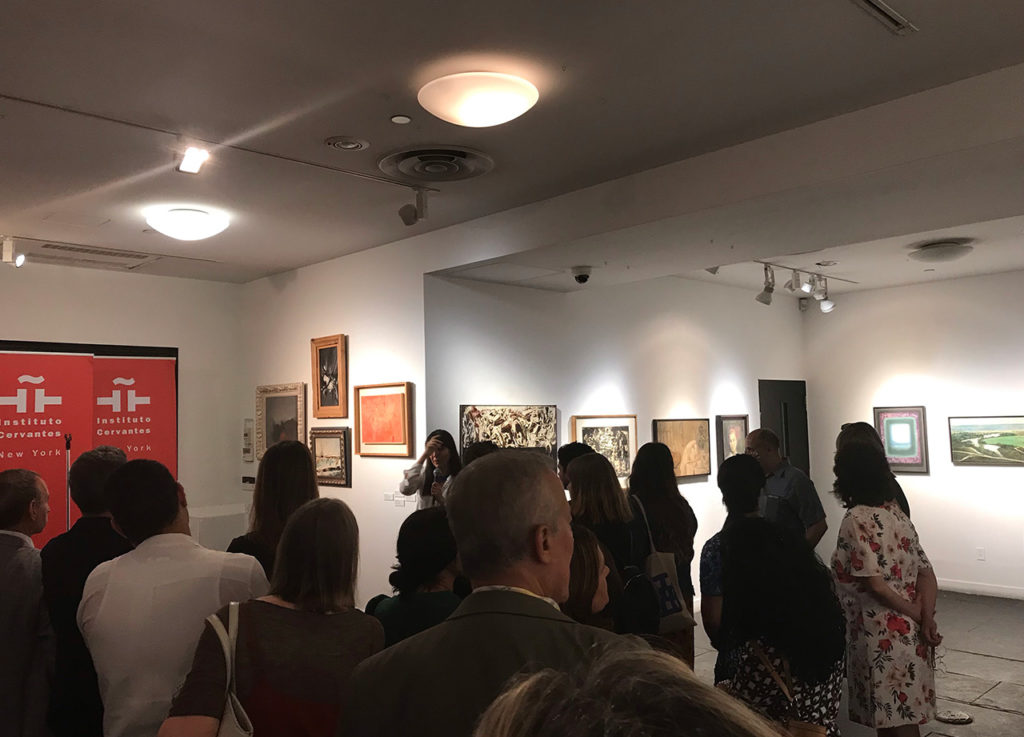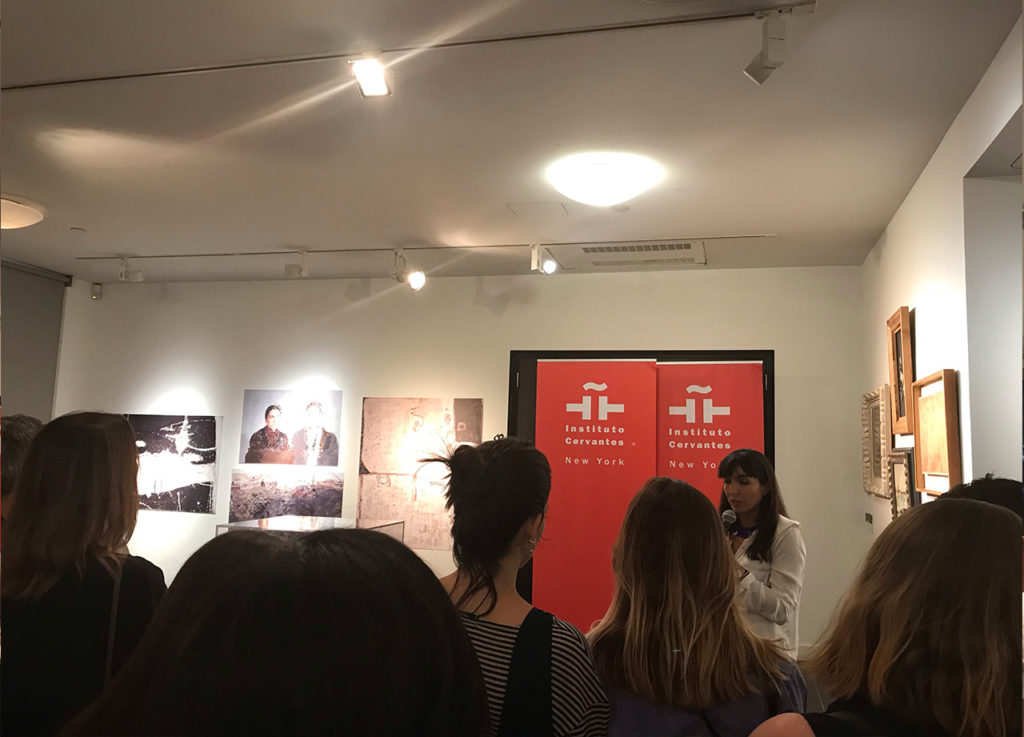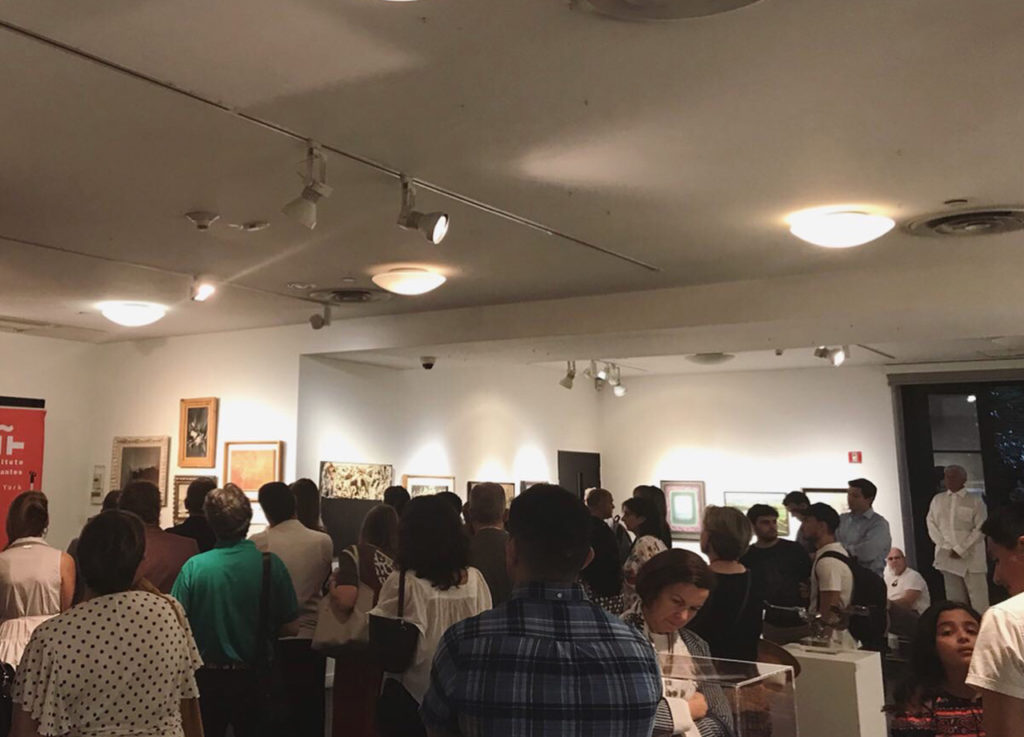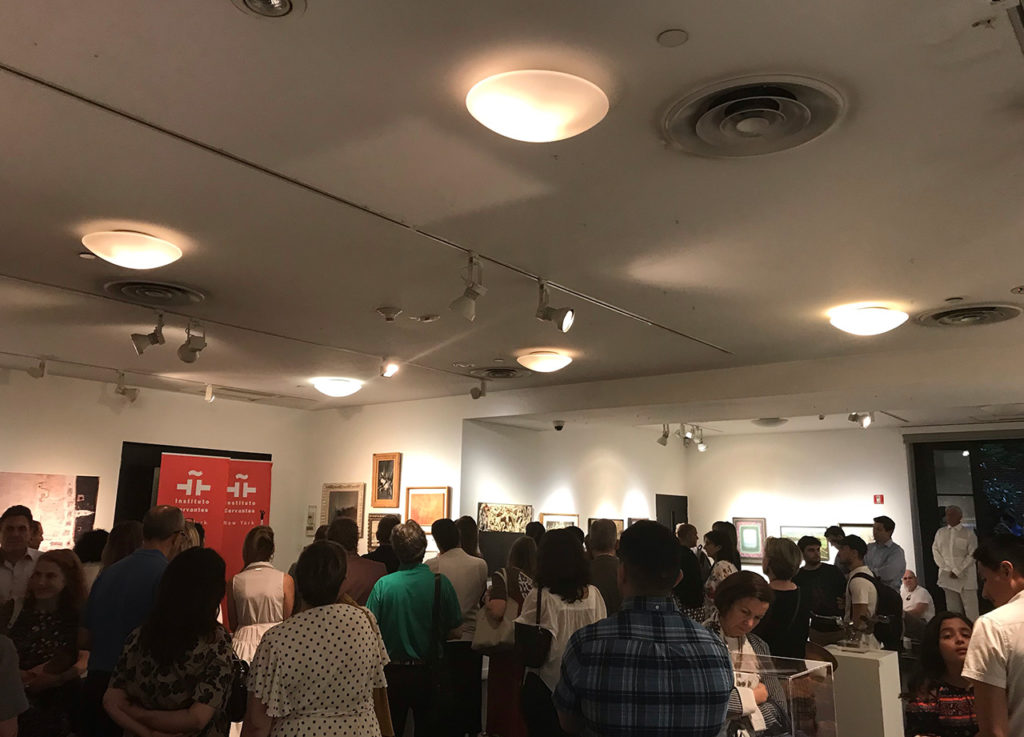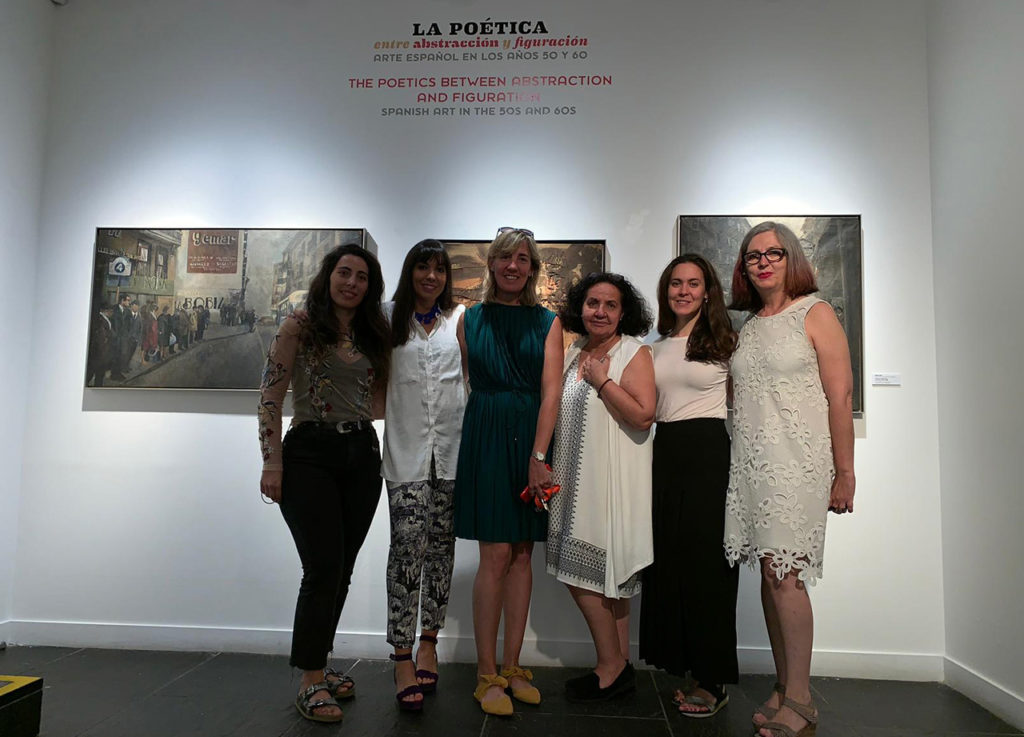Dates / Fechas:
July 25th – September 3rd, 2019
Opening Reception / Inauguración:
July 25th, 2019
Place / Lugar:
Instituto Cervantes (Nueva York)
211 East 49th Street
10017 Nueva York
(Estados Unidos)
Artists / Artistas:
Realistas de Madrid:
Esperanza Parada,
Amalia Avia,
Julio López,
Francisco López,
María Moreno,
Antonio López,
Isabel Quintanilla,
Lucio Muñoz
El Paso:
Manuel Millares,
Manuel Rivera,
Luis Feito,
Antonio Saura,
Rafael Canogar,
Martín Chirino,
Juana Francés,
Antonio Suárez,
Manuel Viola,
Pablo Serrano.
Lucio Muñoz
Curator / Comisaria:
Maria Toral
Organized by / Organizado por:
Instituto Cervantes
Promoción del Arte. Ministerio de Cultura
Intinerary / Itinerancia:
Instituto Cervantes, Praga,
Fine Arts Accademy of Moscú,
Instituto Cervantes, Roma,
Instituto Cervantes, Lisboa
Collaboration Role / Rol de colaboración:
Cultural Department Cervantes Institute of New York
This exhibition includes works by various artists who, according to the history of traditional art, have been labelled under the canon of the categories of abstract and figurative art, and under the label of the “Realistas de Madrid” group and the “El Paso” group. Today they all form part of Spanish art history, in which they shared a certain social and political context, that of the post-war period and Spain’s isolation from the international environment. In this exhibition, as on few previous occasions, these artists and their works are shown in dialogue, and with proposals that occupy a graduation between the most experimental and avant-garde and the considered traditional art. Despite the apparent distance between them, common points and influences can be seen, which go beyond technique and concept, as they are united by true ties of friendship and even family.
We are not seeking the chaotic ordering of the moment, but rather conjunction with reality itself.
RAFAEL CANOGAR
«EL PASO is the consequence of the coming together of various painters and writers, who, through different paths, have understood the moral necessity of carrying out actions within their country.»
Aware of the uselessness of a discussion of terms such as abstraction-figuration, constructive-expressionist art, and collective-individualistic art, our purpose is to present works that are authentic and free, open to experimentation and research, works that know no borders and that are not subject to exclusionary or restrictive canons.
EL PASO GROUP
Thus begins the manifesto that was signed in March, 1957, by Rafael Canogar, Luis Feito, Juana Francés, Manuel Millares, Antonio Saura, Manuel Rivera, Pablo Serrano and Antonio Suárez, together with writers Manuel Conde and José Ayllón. After its publication, the sculptor Martín Chirino and the painter Manuel Viola would join the group. The manifesto was born out of the imperious need for change felt by this group of artists. Since the Civil War, Spain had been immersed in profound cultural isolation, and it seemed that art had been left by the wayside, while in the rest of Europe and the U.S., there was a constantly expanding cultural boom.
In the 50s, this group of young artists put an end to this artistic lethargy that had gone on for too long. They dreamt of artistic renewal and starting in 1955, they would meet, looking for solutions and debating the tendencies and the cultural situation of the moment. Actually, they didn’t make up a homogenous group, but they were united by informalism, and curiously enough, they took Gutiérrez Solana as an indispensable point of reference for the achievement of their objectives. There were many points of commonality among these artists, since they were all from the same generation, they came from the same environment, and they had made the essential trip to Paris, where they learned from Dubuffet, Fautrier or Mathieu.
At the same time, realism, an artistic style that had been shunted aside along with all the revolutionary «isms» of the 20th century, once again acquired a leading role, thanks mainly to American artists. During those same years, a group of Spanish artists participated decisively in the renewal of Spanish sculpture and modeling, since, by looking for what was close and familiar, they put testifying to one’s personal experience above simply capturing reality. A total of seven artists decided to go back to figuration in their art: Esperanza Parada, the brothers Julio y Francisco López, María Moreno, Amalia Avia, Antonio López and Isabel Quintanilla. These artists’ creations are inextricably linked by generational, affective and family bonds, as well as by an identification with certain themes and a similar attitude towards artistic creation.
Something that unquestionably unites both groups of artists is that they fought to have art in Spain recover the importance it had in earlier times, and they achieved that end through styles that at first glance might seem completely opposed to one another. They also coincided in both time and place: their careers were launched in the 50s from the Spanish capital. Madrid, then, was the focal point where all these artists conceived and developed their creations.
Figuration was something common and decisive for him, until he found his voice, and his material, wood. In this way, he arrived at abstraction with a surprising degree of naturalness.
ANTONIO LOPEZ ON LUCIO MUÑOZ
In spite of the apparent distance between figuration and abstraction, there is no doubt that the two currents did influence each other and numerous points of commonality did exist. As a matter of fact, the artist Lucian Freud used to say that «the more you look at an object, the more abstract it is, and also, ironically, the more real.»
…with abstraction in full swing, Antoñito’s appearance on the scene was a lifeline for those who, like me, had opted for the most direct type of figuration. Antonio’s strong personality and his talent, which was soon recognized, dignified and updated realist painting, going as far as to situate it in the avant-garde at the precise moment of splendor of everything abstract, when realism was considered reactionary and academic. Along with Antoñito, the López Hernández brothers, Julio and Paco, played a similar role in the area of sculpture.
AMALIA AVIA
Esta exposición incluye obras de varios artistas que según la historia del arte tradicional, se han etiquetado bajo el canon de las categorías del arte abstracto y figurativo, y bajo la etiqueta del grupo de los Realistas de Madrid y el grupo El Paso. Hoy en día todos ellos forman parte de la historia del arte español, en la que compartieron un contexto social y político determinado, el de la posguerra y el aislamiento de España en relación al ambiente internacional. En esta exposición se muestran, como en pocas ocasiones anteriormente, a estos artistas y sus obras en diálogo, y con propuestas que ocupan una graduación entre lo más experimental y vanguardista y el considerado arte tradicional A pesar de la aparente distancia entre ellos, se constatan puntos comunes e influencias, que van más allá de la técnica y el concepto, ya que les unen verdaderos lazos de amistad e incluso familiares.
Lo que se persigue no es buscar la ordenación caótica del momento, sino la conjunción con la misma realidad.
RAFAEL CANOGAR
«El Paso nace como consecuencia de la agrupación de varios pintores y escritores que por distintos caminos han comprendido la necesidad moral de realizar una acción dentro de su país». Así comienza el manifiesto que en marzo de 1957 firmaron Rafael Canogar, Luis Feito, Juana Francés, Manuel Millares, Antonio Saura, Manuel Rivera, Pablo Serrano y Antonio Suárez, junto a los escritores Manuel Conde y José Ayllón. Tras su publicación, se unirían al grupo el escultor Martín Chirino y el pintor Manuel Viola. Este manifiesto nace como consecuencia de la imperante necesidad de cambio que sintió este grupo de artistas. Desde la Guerra Civil, España estaba completamente sumida en un aislamiento cultural y parecía que el arte se había dejado de lado, mientras que en el resto de Europa y en Estados Unidos la explosión cultural no dejaba de avanzar.
La figuración era algo común y decisivo para él hasta que encontró su voz y su material, la madera. Así llegó a la abstracción con una naturalidad asombrosa
ANTONIO LOPEZ SOBRE LUCIO MUÑOZ
En la década de los cincuenta este grupo de jóvenes artistas puso fin a este letargo artístico que duraba ya de- masiado tiempo. Soñaban con una renovación artística y desde el año 1955 se reunían buscando soluciones y debatiendo sobre las tendencias y la situación cultural de ese momento. En realidad no formaban un grupo homogéneo pero estaban unidos por el Informalismo, y curiosamente tomaron a Gutiérrez Solana como un referente imprescindible para alcanzar sus objetivos. Los puntos en común entre estos artistas fueron numerosos, pues eran todos de la misma generación, venían del mismo entorno y habían realizado el imprescindible viaje a París en el que aprendieron de Dubuffet, Fautrier o Mathieu.
Al mismo tiempo, el Realismo, estilo artístico al que se había dejado de lado con todos los ismos revolucionarios del siglo xx, volvió a adquirir gran protagonismo, gracias principalmente a los artistas norteamericanos. En esas mismas fechas, un grupo de artistas españoles participaron decisivamente en la renovación del panorama de la plástica española, pues anteponían el testimonio de la vivencia personal a la mera captación de la realidad, buscando lo cercano y lo familiar. Un total de siete artistas decidieron volver a la figuración: Esperanza Parada, los hermanos Julio y Francisco López, María Moreno, Amalia Avia, Antonio López e Isabel Quintanilla. Las creaciones de estos artistas están irremediablemente ligadas con lazos de carácter generacional, afectivo y familiar; así como por la identificación con ciertos temas y una actitud similar ante la creación artística.
Algo que une indiscutiblemente a ambos grupos de artistas, es que luchaban por que el arte recuperara en España la importancia que había tenido en tiempos pasados, y lo consiguieron a través de estilos que a primera vista pueden parecernos opuestos. Coinciden además en el tiempo y en el lugar: sus carreras se impulsan en los años cincuenta y desde la capital española. De forma que Madrid es el foco donde todos estos artistas gestan sus creaciones.
A pesar de la aparente distancia entre la figuración y la abstracción, se confirma que sí existía esa influencia y numerosos puntos comunes. De hecho el artista Lucian Freud decía que «cuanto más miras un objeto, más abstracto es, y también, irónicamente, más real».
Catálogo: Catálogo en español con textos de Juan Manuel Bonet, de la comisaria María Toral, la experta Dolores Jimenez Blanco, reproducción de las obras que componen la exposición y documentación con material fotográfico, cronologías y biografías de todos los artistas. Se acompaña de una separata con traducciones a las lenguas locales
